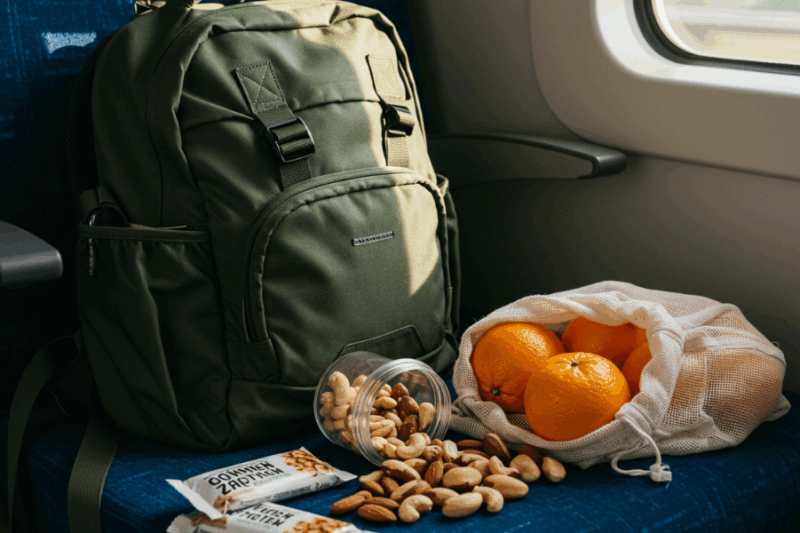Traveling opens up a world of adventure, from exploring new cultures to tasting exotic cuisines. However, it can also disrupt your healthy eating habits, leaving you feeling sluggish or out of sync. Whether you’re jet-setting for business, embarking on a vacation, or road-tripping across the country, maintaining a healthy diet while traveling is entirely achievable with a bit of planning and mindfulness. This article dives into practical strategies and lifestyle tips to help you prioritize travel wellness, ensuring you feel energized and vibrant no matter where your journey takes you.
Why Healthy Eating Matters on the Road
Travel often comes with irregular schedules, tempting fast food options, and unfamiliar dining environments, which can make it easy to stray from nutritious choices. A healthy diet fuels your body with the energy needed to explore new destinations, stay focused during business trips, or simply enjoy your vacation without digestive discomfort or fatigue. By prioritizing nutrient-rich foods, you support your immune system, maintain stable energy levels, and reduce the risk of travel-related health issues like bloating or dehydration. Plus, eating well enhances your overall travel experience, allowing you to fully immerse yourself in the moment without feeling weighed down.
The Challenges of Eating Healthy While Traveling
Maintaining a balanced diet on the go isn’t always straightforward. Airport food courts often prioritize convenience over nutrition, offering processed snacks or high-calorie meals. Time zone changes and packed itineraries can disrupt meal timing, leading to skipped meals or unhealthy snacking. Additionally, cultural differences may introduce unfamiliar ingredients, making it tricky to navigate menus or grocery stores. Understanding these challenges is the first step to overcoming them, and with a few smart strategies, you can stay on track without sacrificing the joy of travel.
Practical Tips for Healthy Travel Eating
Staying committed to a healthy diet while traveling requires preparation and adaptability. Below are actionable tips to help you make nutritious choices, no matter where you are.
Plan Ahead for Meals and Snacks
Preparation is key to travel wellness. Before your trip, research dining options at your destination. Look for restaurants or cafes that offer fresh, whole foods like salads, grilled proteins, or vegetable-based dishes. If you’re staying at a hotel or Airbnb, check if there’s a kitchenette or nearby grocery store where you can stock up on healthy staples like fruits, nuts, or yogurt. Packing portable snacks—think trail mix, protein bars, or single-serve nut butter packets—can save you from relying on vending machines or fast food during layovers or long drives.

Stay Hydrated to Support Your Diet
Hydration is a cornerstone of a healthy diet, especially when traveling. Dehydration can mimic hunger, leading to unnecessary snacking, and is common during flights due to low cabin humidity. Carry a reusable water bottle and refill it regularly. Avoid sugary drinks like sodas or energy drinks, which can spike blood sugar and leave you feeling sluggish. If you’re in a destination with questionable water quality, opt for bottled water or use a portable water purifier to stay safe while keeping hydration first.
Make Smart Choices at Restaurants
Dining out is a highlight of travel, but it doesn’t have to derail your healthy eating goals. Start by scanning menus for dishes that include lean proteins (like grilled chicken or fish), whole grains, and plenty of vegetables. Request dressings or sauces on the side to control calorie intake. If portions are large, consider sharing a dish or packing leftovers for later. Be mindful of hidden calories in beverages—opt for water, unsweetened tea, or a splash of fresh juice instead of cocktails or sugary sodas.
Pack a Travel Nutrition Kit
A small nutrition kit can be a lifesaver for maintaining a healthy diet. Include items like reusable utensils, a collapsible container for leftovers, and a few non-perishable snacks. Dried fruits, whole-grain crackers, or single-serve packs of almond butter are easy to pack and provide quick, nutritious options. If you’re traveling internationally, check customs regulations to ensure your snacks comply with food import rules. This kit empowers you to make healthy choices even when options are limited.
Navigating Cultural Cuisines with Health in Mind
One of the joys of travel is sampling local cuisines, but this can sometimes clash with healthy eating goals. The good news? Many traditional diets around the world are naturally nutritious. For example, Mediterranean cuisines often emphasize olive oil, fresh vegetables, and lean proteins, while Asian dishes may feature nutrient-dense ingredients like tofu, seaweed, or steamed greens. Do a little research on your destination’s food culture to identify healthy staples. When trying new dishes, balance indulgence with moderation—savor a small portion of a rich local dessert but pair it with a lighter meal.
Handling Dietary Restrictions Abroad
If you follow a specific diet—vegan, gluten-free, or low-carb, for instance—traveling can feel daunting. Communicate your needs clearly when dining out, using simple phrases or translation apps if there’s a language barrier. Many destinations now cater to dietary restrictions, especially in tourist-heavy areas. Apps like HappyCow or Yelp can help you find restaurants that align with your dietary preferences. When in doubt, stick to simple, whole foods like grilled vegetables or plain rice, which are widely available and less likely to contain hidden allergens.
Staying Active to Complement Your Diet
A healthy diet pairs beautifully with physical activity, and travel offers plenty of opportunities to stay active. Walking tours, hiking, or even strolling through a new city can burn calories and boost your mood. If you’re staying in a hotel, check for a gym or nearby parks for a quick workout. Even light stretching in your room can help counteract the effects of long flights or car rides. Staying active not only supports your diet but also enhances your energy levels, making your travel experience more enjoyable.
Quick Tips for Active Travel
- Choose walking over taxis when exploring nearby attractions.
- Pack resistance bands for a portable, low-space workout.
- Incorporate movement into sightseeing—opt for bike rentals or guided hiking tours.
- Schedule active breaks during long travel days to stretch and refresh.
Mindful Eating for Travel Wellness
Mindful eating is a powerful tool for maintaining a healthy diet on the road. Pay attention to hunger and fullness cues, and avoid eating out of boredom or stress during travel delays. Take time to savor your meals, even when dining on the go, to enhance satisfaction and prevent overeating. Practicing mindfulness also means being kind to yourself—if you indulge in a less-than-healthy meal, balance it out with lighter choices later rather than feeling guilty.
Building a Sustainable Travel Routine
Consistency is key to long-term travel wellness. Create a flexible routine that includes regular meal times, hydration breaks, and light physical activity. For frequent travelers, consider investing in tools like a compact blender for smoothies or a meal planning app to track your intake. Over time, these habits become second nature, making it easier to stay healthy no matter where your travels take you.
FAQ: Healthy Diet While Traveling
How can I eat healthy at airports?
Airports often have healthier options like salads, fruit cups, or grilled protein wraps. Look for chains like Starbucks or Pret A Manger, which offer nutrient-dense choices. Packing your own snacks, like nuts or protein bars, is also a great way to avoid processed airport food.
What are the best portable snacks for travel?
Opt for non-perishable, nutrient-dense snacks like trail mix, jerky, dried fruit, whole-grain crackers, or single-serve nut butter packets. These are easy to pack, don’t require refrigeration, and provide sustained energy.
How do I stay hydrated while traveling?
Carry a reusable water bottle and refill it after security checks. Sip water regularly, especially during flights, and avoid sugary or caffeinated drinks that can dehydrate you. Electrolyte packets can help if you’re in a hot climate or sweating a lot.
Can I maintain a vegetarian or vegan diet while traveling?
Yes! Research vegetarian-friendly restaurants at your destination using apps like HappyCow. Focus on plant-based staples like legumes, rice, or grilled vegetables, and communicate your needs clearly when dining out.
How do I avoid overeating during travel?
Practice mindful eating by savoring each bite and stopping when you’re comfortably full. Avoid eating out of boredom during layovers, and balance indulgent meals with lighter options like salads or broth-based soups.
By incorporating these strategies, you can maintain a healthy diet while traveling without sacrificing the joy of exploring new places. With a little planning and mindfulness, you’ll return from your adventures feeling refreshed, energized, and ready for your next journey.



